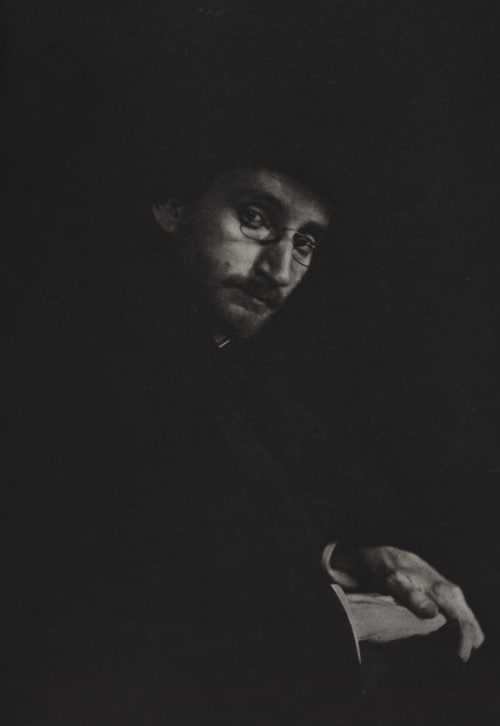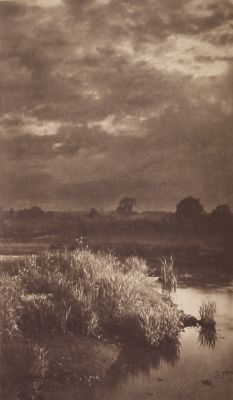
Title
Portrait of F. Holland DayArtist
Kasebier, Gertrude (American, 1852-1934)Publication
Camera Notes Vol. 3 No. 1Date
1899Process
PhotogravureAtelier
Photochrome Engraving Company, New YorkImage Size
17.5 x 12.1 cm
Gertrude Kasebier (1853-1934), a leading photographer in the photo-secessionist movement is perhaps best known for her excellent portraits. Alfred Stieglitz recognized her talent when he selected five of her photographs for inclusion in the July 1899 issue of his new magazine Camera Notes. In explaining that decision Stieglitz declared that she was, beyond dispute, the leading artistic portrait photographer of the day. Fred Holland Day (1864-1933) was a major pictorialist photographer who rivaled Stieglitz in influence and reputation early in their careers. He was quite forgotten for some time, but beginning in the 1990s collectors rediscovered him, and his originals are in high demand, in large part because of his homoerotic portraits. Day also photographed a portrait of Kasebier in 1899, perhaps during the same session. In 1901-02 Kasebier carried on correspondence with Day; their letters to each other reflect their growing mutual frustration with Stieglitz.
Reproduced / Exhibited
Fairbrother, Trevor, Fred H. Day, Fred H. Day, and Fred H. Day. Making a Presence: F. Holland Day in Artistic Photography. Andover, Mass: Addison Gallery of American Art, 2012. (cover)
Homer, William I, Catherine Johnson, and Alfred Stieglitz. Stieglitz and the Photo-Secession, 1902. London: Penguin Putnam, 2002. p. 11
Jussim, Estelle. Slave to Beauty: The Eccentric Life and Controversial Career of F. Holland Day, Photographer, Publisher, Aesthete. Boston: Godine, 1981. p. 140


